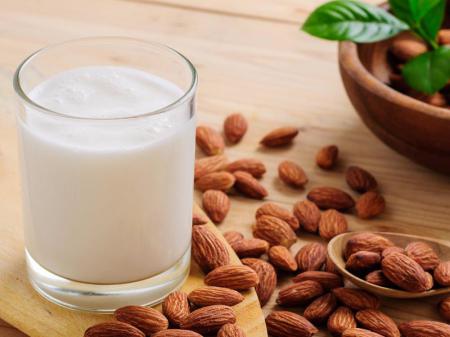
A great alternative to cows milk. Full of Biotin and Vitamin E.
Ingredients
- 1000 grams of Water Filtered
- 100 grams of Almonds
- 20 grams of Dates
- 1 grams of Salt Himalayan Rock
Role in Health Support:
biotin (Blood sugar balance, Skin health, ). vitamin E (Protection Against Free Radical Damage, Protection Against Heart Disease, ). manganese (Bone Production, Skin integrity, Blood Sugar Control, Protection Against Free Radical Damage, ).Recipe Directions
How To Make Almond Milk at Home
Makes about 2 cups
What You Need
Ingredients
1 cup raw almonds, preferably organic
2 cups water, plus more for soaking
Sweeteners like honey, sugar, agave syrup, or maple syrup, to taste, optional
Equipment
Bowls
Strainer
Measuring cup
Blender or food processor
Fine-mesh nut bag or cheese cloth
Instructions
- Soak the almonds overnight or up to 2 days. Place the almonds in a bowl and cover with about an inch of water. They will plump as they absorb water. Let stand on the counter, covered with a cloth, overnight, or refrigerate for up to 2 days. The longer the almonds soak, the creamier the almond milk.
- Drain and rinse the almonds. Drain the almonds from their soaking water and rinse them thoroughly under cool running water. At this point, the almonds should feel a little squishy if you pinch them. (It's best to discard the soaking water because it contains phytic acid, which inhibits the body's ability to absorb nutrients.)
- Combine the almonds and water in a blender. Place the almonds in the blender and cover with 2 cups of water.
- Blend at the highest speed for 2 minutes. Pulse the blender a few times to break up the almonds, then blend continuously for two minutes. The almonds should be broken down into a very fine meal and the water should be white and opaque. (If using a food processor, process for 4 minutes total, pausing to scrape down the sides halfway through.)
- Strain the almonds. Line the strainer with either the opened nut bag or cheese cloth, and place over a measuring cup. Pour the almond mixture into the strainer.
- Press all the almond milk from the almond meal. Gather the nut bag or cheese cloth around the almond meal and twist close. Squeeze and press with clean hands to extract as much almond milk as possible. You should get about 2 cups. (See Recipe Note for what to do with the leftover almond meal.)
- Sweeten to taste. Taste the almond milk, and if a sweeter drink is desired, add sweetener to taste.
- Refrigerate almond milk. Store the almond milk in sealed containers in the fridge for up to two days.
Vitamins Distribution
| Vitamin / Mineral | (%) | Recommended Daily Intake |
| biotin | (53) | |
| vitamin E | (43) | |
| manganese | (29) | |
| copper | (28) | |
| vitamin B2 | (20) | |
| phosphorus | (17) | |
| magnesium | (17) | |
| molybdenum | (16) | |
| fiber | (12) | |
| vitamin B6 | (1) | |
| calcium | (0) |
The above graph is an indication of the percentages for each vitamin and mineral that the recipe provides for you. The numbers are the percentage of the Recommended daily intake, 100 means that is all you require for that vitamin or mineral for 1 day. *Note above percentages are based on USDA Figures, effects of cooking and juicing will affect these figures, use as a guideline only. For slow juicing Typically 20-30 percent is lost and 80-90% of the fibre is lost.